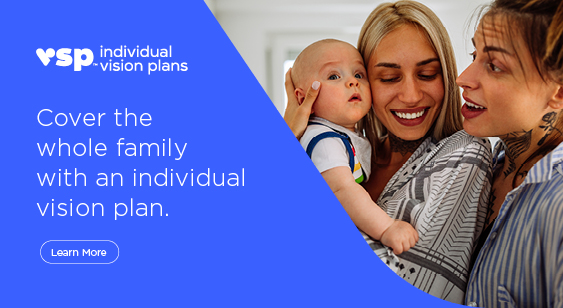KIDS VISION
As a parent, you should watch for signs that may indicate a vision development problem, including a short attention span for the child's age, difficulty with eye-hand-body coordination in ball play and bike riding, avoidance of coloring and puzzles and other detailed activities.
Vision doesn't just happen. A child's brain learns how to use eyes to see just like it learns how to use legs to walk or a mouth to form words. The longer a vision problem goes undiagnosed and untreated, the more a child's brain learns to accommodate the vision problem. Children with uncorrected vision conditions or eye health problems face many barriers in life: academically, socially and athletically. High-quality eye care can break down these barriers and help enable your children to reach their highest potential.
Few things are as precious as the gift of sight. What many people may not realize is that the eyes are only part of the visual system and we actually 'see' with our brain (visual cortex). During the first 6-8 years of a person's life, the visual system is developing connections between the eyes (the videocamera) and the brain (the television). If a child goes untreated with a focusing error, eye turn, or other obstruction of vision during these formative years, they will develop substandard visual acuity that carries over into adulthood.
That's why a comprehensive eye examination is so important for children. Early detection and treatment provides the very best opportunity to correct vision problems so your child can learn to see clearly. Eighty percent of all learning is performed through vision. Make sure your child has the best possible tools to learn successfully.
CHILDREN'S VISION AND EXAM RECOMMENDATIONS
The American Optometric Association recommends that parents bring infants in for a checkup at 6 months to 1 year to screen for eye turns (strabismus), health issues, and vision problems (refractive error). If there are no ocular health or vision problems at this time, the next comprehensive eye exam should occur between the ages of 3 and 4. Safeguarding your preschooler's vision prior to entering kindergarten is an essential step in ensuring optimal learning.
By age 3, your child should have a thorough optometric eye examination to make sure your preschooler's vision is developing properly and there is no evidence of eye disease. Your doctor can prescribe treatment including glasses and/or vision therapy to correct a vision development problem.
Here are several tips to make your child's optometric examination a positive experience:
-Make an appointment early in the day. Allow about one hour.
-Talk about the examination in advance and encourage your child's questions.
-Explain the examination in your child's terms, comparing the E chart to a puzzle and the instruments to tiny flashlights.
Unless your doctor advises otherwise, your child's next eye examination should be at age 5. By comparing test results of the two examinations, your optometrist can tell how well your child's vision is developing for the next major step into the school years.

